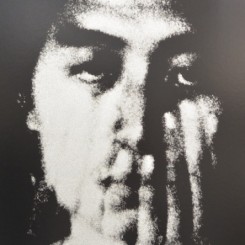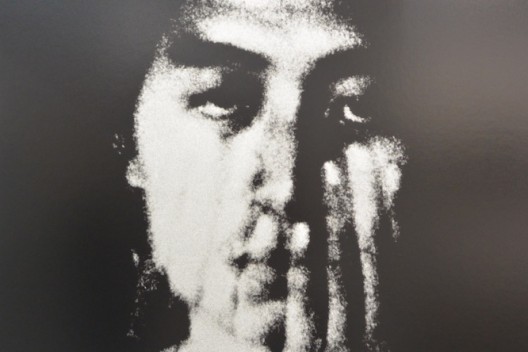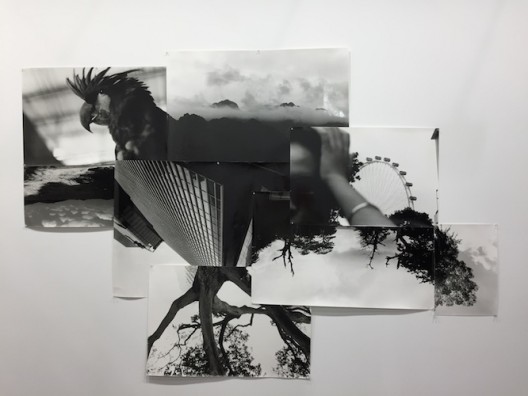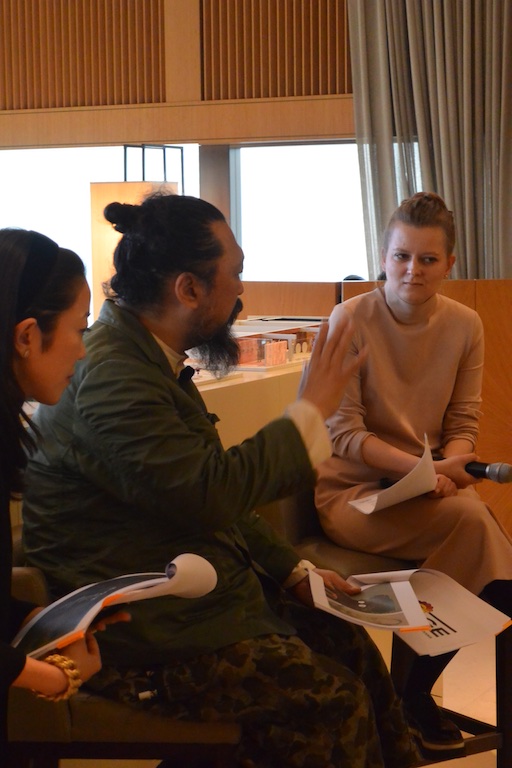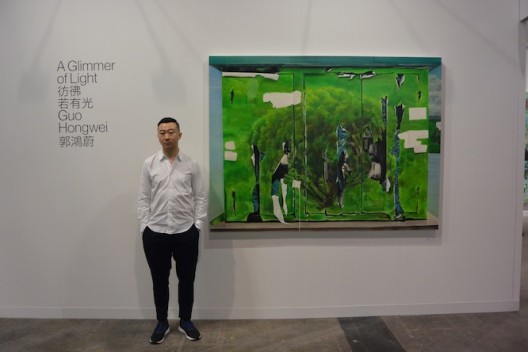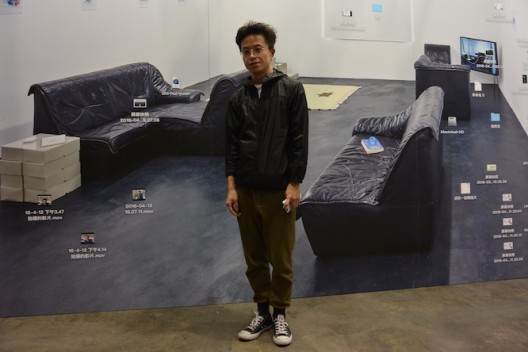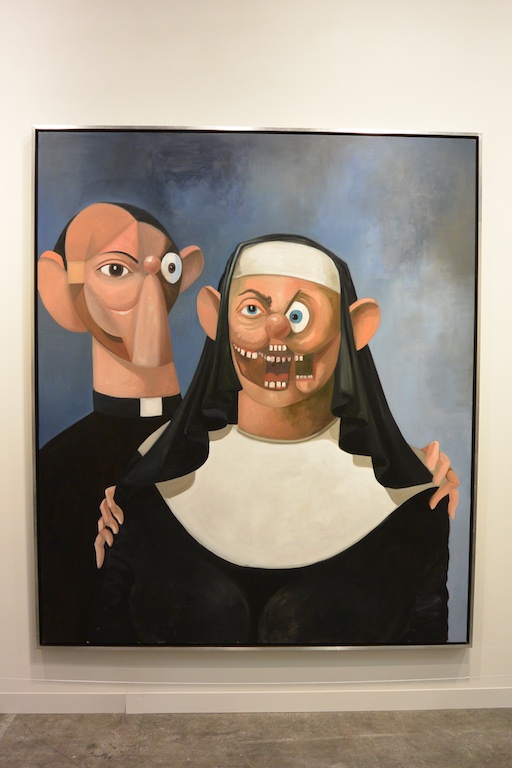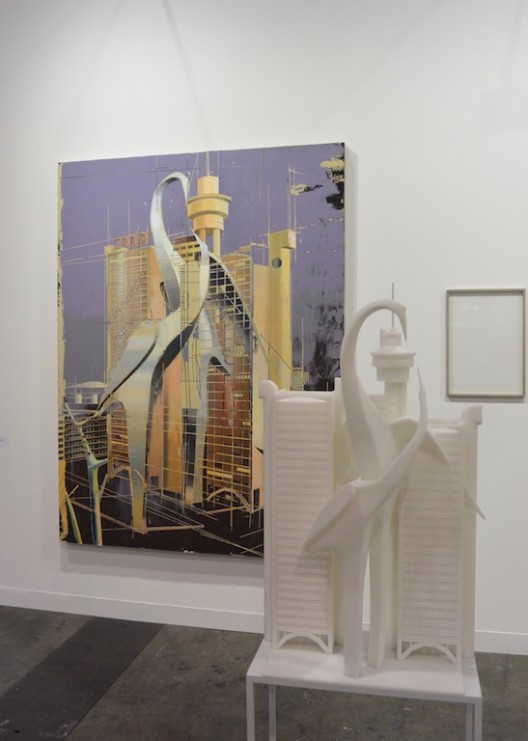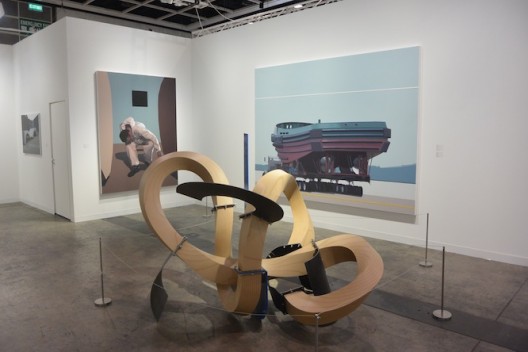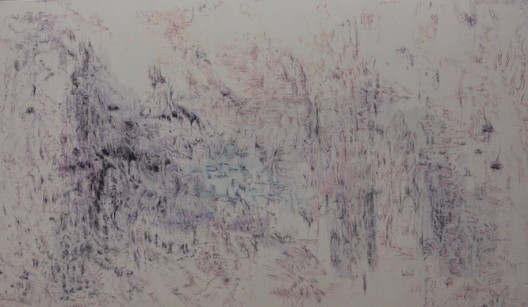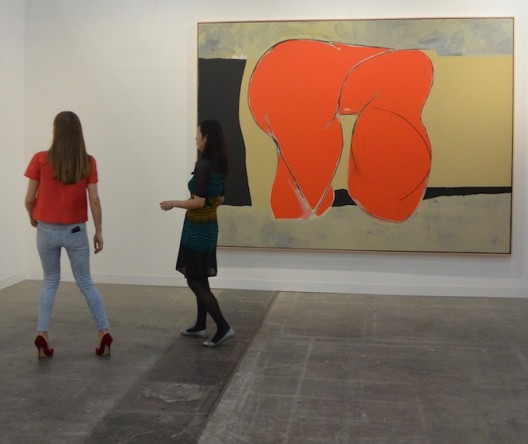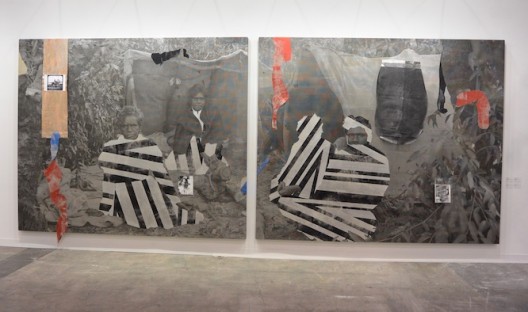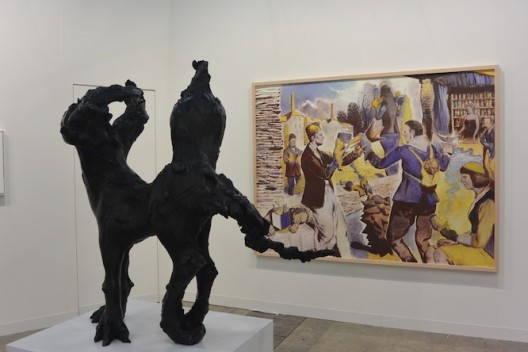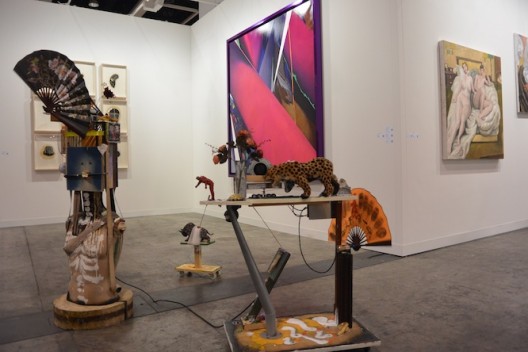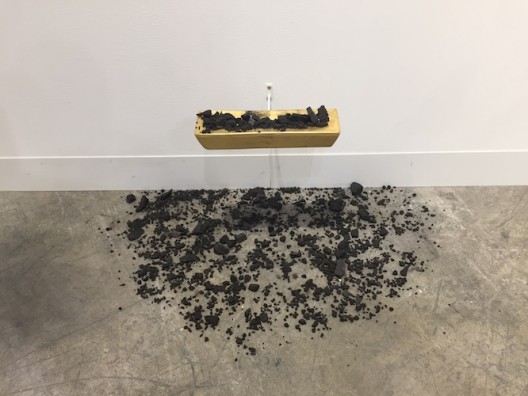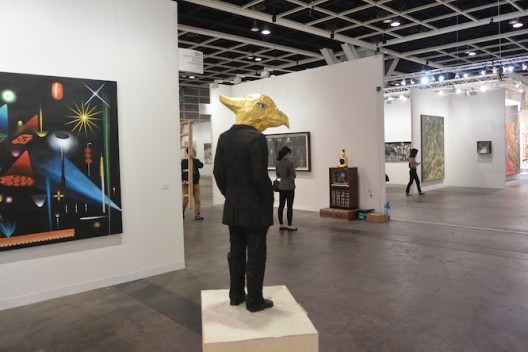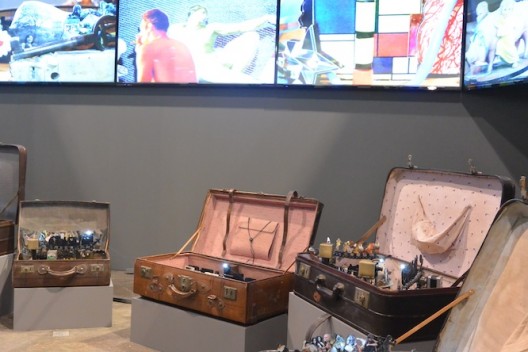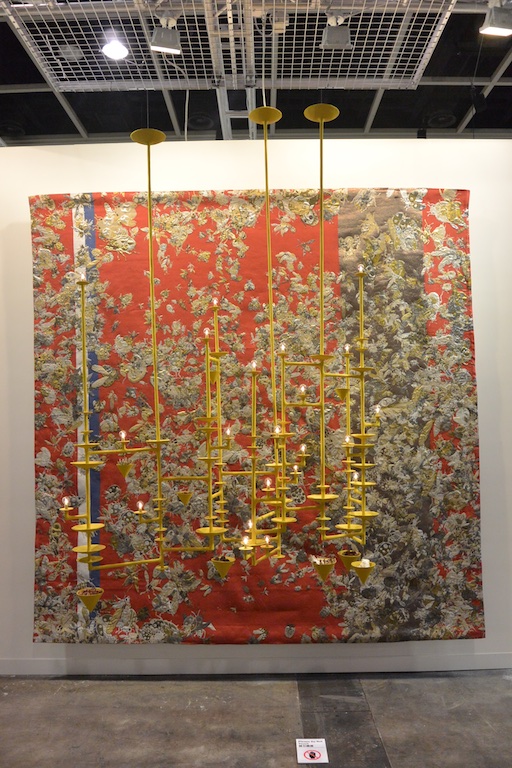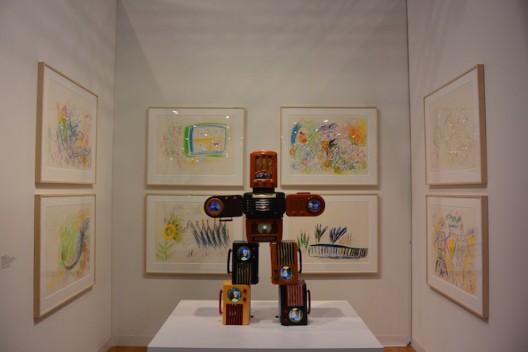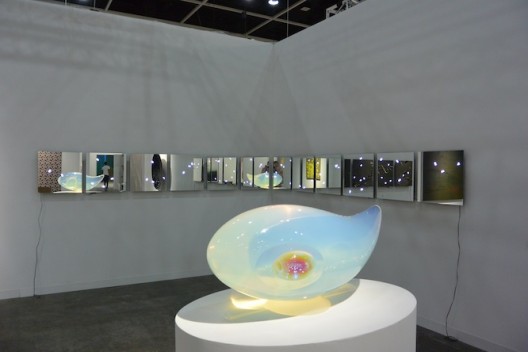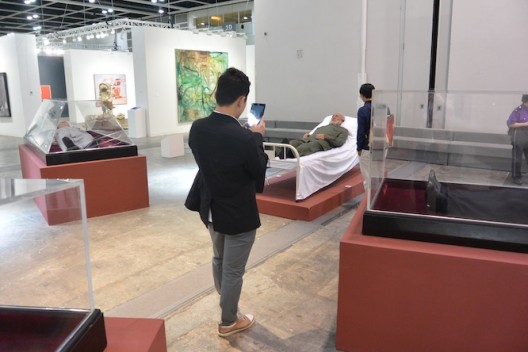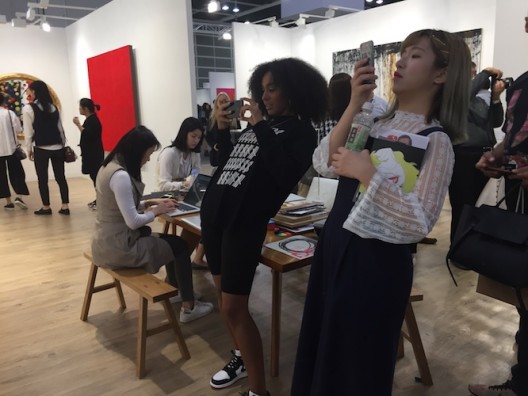It was great, but did they sell?
Yes. Over the entire period of Art Basel Hong Kong, Ran Dian spoke with many gallerists, collectors, curators and museum directors from all over China, East Asia, South East Asia, Europe, North America, India and Australia. The overall reaction was very positive. Many gallerists were delighted with the results.
There were a few (small) negatives. Galleries from India generally got off to a slower start with sales but said that things improved later. On the final day, a couple of mid-sized European galleries were less enthusiastic, mentioning to me that their sales were just “ok” or only covered outlays. The Encounters section, Hong Kong’s equivalent of Art Basel Unlimited, still needs work—right now it is big rather than nuanced, which has always been its problem (Unlimited in Basel, please note, regularly includes very small works but gives them space). At the end of the fair, though, even China’s tightened currency exchange restrictions were not enough to spoil the party. (We still have to see how many sales have difficulty settling).
Chinese galleries that did particularly well included ShanghART, Magician Space, Platform China, Hanart TZ and BANK, to name but a few. From Europe, Korea and the U.S., sales directors at Victoria Miro, Lisson, Gladstone, Chantal Crousel, Marian Goodman, Kukje, Almine Rech, Lévy Gorvy Michael Werner and David Zwirner were all beaming. So at the exhibitor after party there were (almost) no tears.
Next year is already in planning. Art Basel Hong Kong will once again coincide with Easter. We will have to see whether that again affects the presence of Western visitors and regional expats, and whether (by then) that will even matter. [scroll down for more]
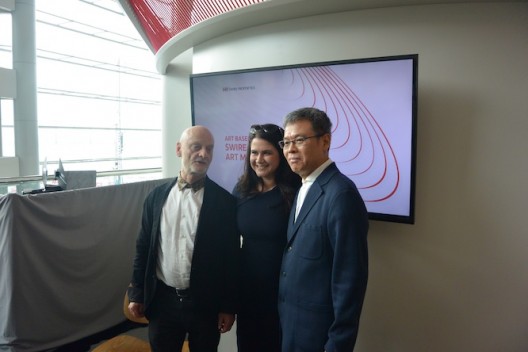
(L to R) Dr Uli Sigg, Charlotte Appleyard and Budi Tek, following Mr Tek’s talk at Swire Properties Lounge at Art Basel Hong Kong (Ran Dian images)
Tax and Currency
From January 1 the Chinese government halved the import duty on artworks to 3%. In 2012 it was 12%. The change is probably not because the government suddenly loves foreign art but because it is taking a range of measures to encourage capital inflows of foreign currency in order to counteract official and unofficial currency outflows. Maybe you have noticed that residential sales around the world in—Hong Kong, Singapore, London, Sydney, Vancouver, Seattle, New York—are to greater or lesser extents being driven by Chinese investment. There are different reasons for this, but a major one is to hedge against economic instability in China and to park income received outside of China. In recent years this has created a quandary for the Chinese government, which has responded by drastically tightening foreign exchange controls. It is a blunt tool that affects everyone, from mum and dad investors to dedicated contemporary art collectors. Leading up to Art Basel Hong Kong, everyone knew it was going to have an impact on sales. And it did—but despite the difficulty reported, sales were still very strong. [scroll down for more]
Artists
Showtime
It is hard to pin down precisely why Art Basel is such a smooth machine for the sale and promotion of art. Brand cachet and marketing is only part of the reason, and VIP relations another. Just as important, though, is display. Each year since buying the Art HK fair in 2011, Art Basel has played with and refined the Hong Kong recipe, including everything from exhibitors, dates, programming, catering and, very importantly, layout. Yes, it looks very sleek, but the real magic is in engineering crowd flow through the exhibition thoroughfares and individual booths while maintaining enough elegant wall space to keep galleries separate, but not claustrophobic. In previous years, the upper floor (particularly the rear section) suffered relative to the ground floor. Everyone wanting to visit the third floor has first to get through security and crowds, negotiate two long escalators and more crowds and more security. Often visitors had run out of energy by the time they got to the back of the third floor. That has changed. Greater crowds and growing familiarity with the exhibition and Hong Kong Convention Centre no doubt helped, but a lot comes down to the show layout, including more strategic placement of cafes and a more efficient organization of sections—particularly the central Encounters space. I believe it would still help enormously to open the top floor an hour earlier than the ground floor and to move the security check (but access points mean this is easier said than done). [scroll down for more]
Painting
Art Reports and Different Numbers
Reports on the art market are suddenly very hip. The art market is still such a tiny little thing compared with other markets, like pork bellies or copper, but a sufficient number of clients of investment banks are involved in it to make the financial analysis worthwhile. Apparently. The trouble is that most reports are rubbish, with a few exceptions.
Art Basel Hong Kong saw the launch of the Art Basel UBS Global Art Market Report 2017, compiled by Clare McAndrew, founder of Arts Economics. TEFAF, the other major international art fair, founded in 1988 and owned by the European Fine Art Foundation (an association of dealers), produced its own Art Market Report. The person who used to write this report is Clare McAndrew. A third report is produced by Artprice, a French-owned online art database, in cooperation with Art Market Monitor, owned by China’s Artron (probably the world’s biggest art book printer and owner of the world’s biggest unnavigable art website). And by the way, Chinese auction data for the Art Basel UBS report came from Art Market Monitor of Artron, supported by the Shanghai Culture and Research Institute. [scroll down for more]
Up or down? And how big you say?
The Art Basel & UBS Art Market Report says that since 2015, the world art market is down by 11% to USD 56.6 billion.
TEFAF’s says the world art market, comprising auction and private sales, is up 1.7% to USD 45 billion.
Artprice says that fine art sales (Rembrandts, Song Dynasty porcelain, Louis XI clocks) are down 23% to USD 16.9 billion, compared with Art Basel UBS’s figure of USD 22.1 billion.
Maybe maths is not the art world’s strong point, but putting dollar signs in front of the word “billion” tends to concentrate the mind.
The main difference between the TEFAF and Art Basel UBS reports is that the latter includes more data on auction sales (including Chinese ceramics, a very important sector). But auction sales only get you so far. How does one estimate the size of the private sales market? Both the Art Basel UBS and TEFAF reports used an anonymous, voluntary online survey of art dealers (TEFAF—6,500 with a 17% response rate, Art Basel UBS—7,000 with a 5% response rate). Statistical methodology is helpful, but the whole thing is still very opaque (subtext: dealers have been known to “gild the lily”. Sometimes the gilding is so good, it leads to gelding), and anecdotal evidence suggests that all auction records are routinely surpassed in private sales. Well goodness gracious.
And then there is the problem of comparing apples and oranges, even for the same artist and for works from the same period that are of commensurable size and quality. And different clients get (and ask for) different prices.
If only we could take a quick look at the manifest of works in storage at free ports in Geneva, Luxembourg, Singapore and Shanghai (TEFAF estimates that 1.2 million artworks are held in free port storage in Geneva), and then cross-check this with art insurers and confirmed private sales. Hmm. Ok, it’s unlikely for sure, but greater transparency would make for a more robust and therefore more lucrative market. [scroll down for more]
Sculpture – what to do with it?
Facts and Figures
– U.S.A.! The U.S. is still No.1. It generates 40% of global sales, followed by the U.K. (well, London) and China
– 33,000. Is the number of high-net-worth Americans who spent USD 1 million or more on art in the past 2 years (expect to see China catch up fast).
– Galleries go big, or suffer. The proportion of dealer sales accounted for 57% (up 3%) and Auctions for 43% (down 26%). However, only galleries with annual turnover above USD 1 million increased revenue.
– China rules Auctions. China is the biggest region for auction sales, but non-payment is a significant and underreported issue.
– King Zhang. USD 354.8 million was the total auction sales in 2016 for Zhang Daqian (1899-1983), making Zhang the foremost artist at auction (Artprice and Art Market Monitor).
– Online sales still small. But growing.
Fakes and Money Laundering
Are fakes a problem? Sure, but get some perspective, because a far bigger problem is “fakes” in the markets for medicine, milk products and automotive parts. And anyway, in the art world, money laundering and smuggling puts fakery in the shade, because many works are highly transportable, valuable, with limited or no publicly available documentation— and really, how many customs agents have a clue what they’re looking for anyway? (Dear Miami customs agents, when you suggest to me I am carrying cash and art, not only are you asking the wrong person, but in the wrong place and at the wrong time). Further, once an artwork is stored in a Freeport, it can disappear for years or decades, moved from shelf to shelf as collateral, or as ownership changes (after all, moving USD 50 million these days without something appearing on an electronic bank statement somewhere is virtually impossible).
So here we are now. Again.
[no more scrolling – you can stop now.]
Sources
Scott Reyburn, “What’s the Global Art Market Really Worth? Depends Who You Ask.” New York Times, March 23, 2017.
https://www.nytimes.com/2017/03/23/arts/global-art-market.html?_r=1
